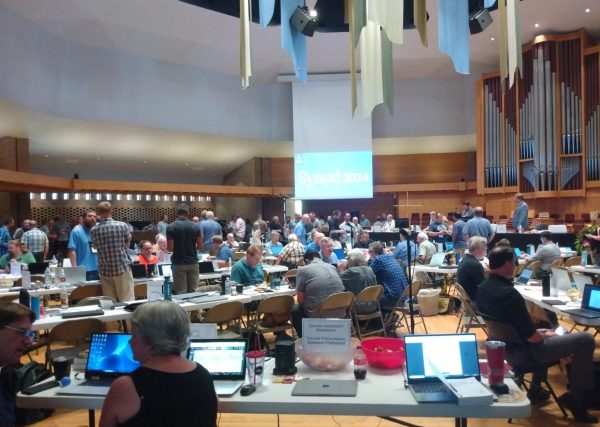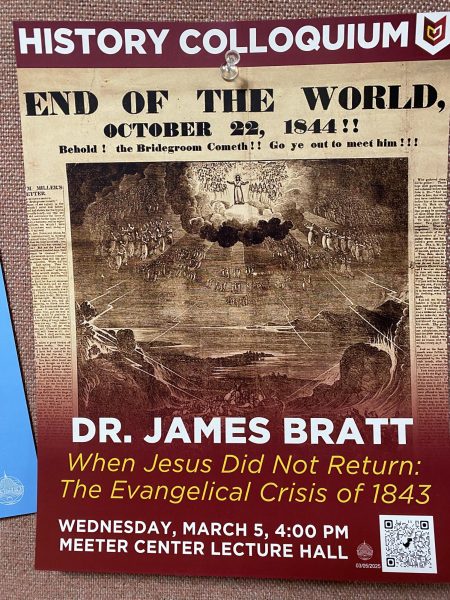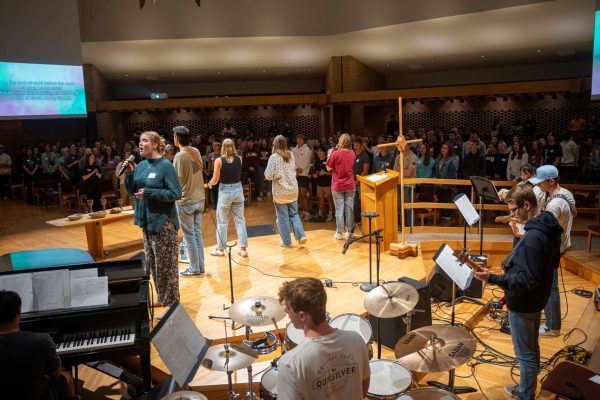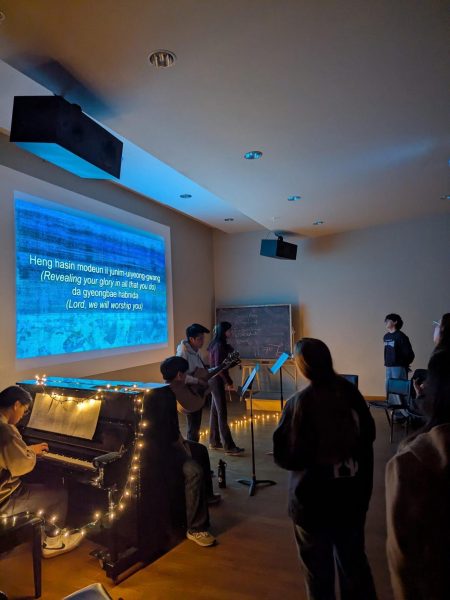CRC membership decline correlates with Calvin enrollment
The Christian Reformed Church (CRC) is shrinking. Far from a new trend, the denomination has been steadily declining since its peak in 1992. Since claiming over 316,000 members in 1992, the CRC has lost members every year since with only two exceptions. As of 2018, the denomination reports just under 228,000 members, marking a 25 percent decline in 26 years.
In 1992, Synod (the CRC’s governing body) stated that the church should “use the gifts of women, in teaching, expounding the Word of God and providing pastoral care, all under the supervision of the elders.”
Although there would be no practiced ordination of women until 1996, for many members, the line had already been crossed. Many churches departed to form the United Reformed Church (URC), founded explicitly in response to the decision to ordain women, in addition to concerns about the acceptance of evolution and the perceived questioning of the Bible’s infallibility.
Between 1992 and 1999 the denomination saw a decline of over 40,000 members, leading many, especially those who had left for the URC, to see a clear correlation between the denomination’s theological decisions and their membership struggles.
Dr. Neil Carlson, director of the Calvin Center for Social Research, sees it differently. In a 2015 article for his blog, “Charting Church Leadership,” Carlson argues that because of the aging membership of the post-war baby boomers, the denomination was “destined by demography to start shrinking in the 90’s.”
While acknowledging that theological decisions almost certainly exaggerated the decline, he rejects the notion that “faithfulness to traditional gender roles” would correspond to continued denominational growth.
Colin Watson, director of ministries and administration for the CRC, agrees. “I do not see the historic decline in attendance and membership as a result of theology,” he argues, “but there are certainly demographic and cultural aspects of the shift. The CRC is not alone in this, since a cursory look at the historical Christian denominations show[s] a similar trend.”
Calvin’s chaplain Mary Hulst concurs, noting the visible drop in birth rates among CRC congregants, evident in the infant baptism records the denomination collects. In 1963, at the tail end of the baby boom, there was approximately one child baptized per year for every eight families in the denomination. The denominational “Yearbook” for 2018 puts that ratio at one to twenty-five, a steep drop consistent with birth rates nationwide and throughout much of the world.
Hulst expands beyond demographics, also citing the rise of megachurches as opposed to traditional, doctrine-focused churches.
“Loyalty to denominations is decreasing significantly. It was very rare a generation ago for people to leave the denomination in which they were reared in order to attend another denomination,” Hulst said. That, she says, has now completely changed.
The decline in membership at the denominational level is not unnoticed, or unfelt, at Calvin College. Mirroring its supporting denomination, Calvin’s enrollment has fallen each of the the last five years and has been for much of the last decade and a half.
In the fall of 2017, the incoming class (excluding transfer students) dropped below 900 for the first time in more than two decades. These trends have concrete consequences, magnifying the effect of Calvin’s debt crisis, forcing a dorm floor closure, faculty layoffs and a reduction in academic options.
Hulst sees a two-fold explanation. Again, as birth rates have fallen, there are fewer 18-year-olds in the state of Michigan, a drop, she says, that Calvin and other institutions saw coming. She also pointed out how the 2008 recession decreased families’ willingness to pay the high price of a liberal arts education.
“Liberal arts colleges had to defend their curriculum in ways they hadn’t before,” said Hulst, indicating that many families chose the promise of larger scholarships or obvious employability over a degree from an institution like Calvin.
Echoing this sentiment, Russ Bloem, Calvin’s vice president of enrollment management, states that higher education nationwide is struggling “due to a complex confluence of demographic, geographic and economic factors. Declining membership in the CRC is one of many headwinds facing Calvin at this time.”
The available data does indicate that a decline in birth rates is certainly a factor, though perhaps not the most prominent. First, the number of students enrolled at Calvin who are from the state of Michigan in the last twenty years has fallen by less than 200 students, significant but not determinant. Second, if demographic statistics were the primary factor, one could expect to see a similar decline among schools that have either regional or theological similarity to Calvin.
A brief survey of schools with available enrollment data shows a mixed bag: although Cornerstone University and Grand Rapids Community College have experienced declines similar to Calvin’s, Hope College’s enrollment has remained relatively steady while Grand Valley State University has experienced continued enrollment growth, and Dordt College has record high enrollment.
The statistical anomaly for Calvin lies in its students who come from a Christian Reformed background. In 1998, 2,261 students — over half of the student-body — came from the CRC, while in the fall of 2017 only 1,175 students — around 30 percent of the student body — belonged to the CRC. This drop of over 1,000 students seems large when compared to the net loss of 300 students the institution has faced over the same two decades.
Mitigating these losses are an increasing number of AHANA students. In 1998, the 155 non-international students of color on campus composed about three percent of the population. That number has multiplied four-fold to 621 AHANA students, or sixteen percent of the student body, in the fall of 2017. This increase of nearly 500 students, combined with more than 100 additional international students, has offset much of the enrollment-loss from the historically Dutch CRC.
It is difficult to separate the diminishing enrollment at Calvin from the diminishing membership in the CRC. Consequently, leaders at both institutions are seeking similar solutions to similar problems. In reference to hopes for the CRC, Hulst noted the growth of church plants comprised of Latinx and Korean communities, as well as growth within urban communities.
Watson echoed Hulst’s hope that the denomination has found in the growth of ethnically diverse churches nationwide.
“The world is becoming smaller,” he said, “in that the upward trend in ethnic diversity in North America is continuing. God is moving. We must remain in step with His direction.”










Virginia Rubingh • Sep 24, 2021 at 2:18 pm
When any church/college goes contrary to Scripture (I Timothy 2:12 and 3) can God bless any domination? When God says ‘do not’ what is that you do not understand?
Jim Antonides • Jun 23, 2021 at 12:52 pm
Many “Reformed Christians” prefer solid confessional schools and seminaries.
Those “Reformed Christian” educational institutions are growing in numbers every year for good reason.
Tom Bracewell • Apr 29, 2018 at 5:00 pm
The CRC and Calvin problem is they don’t know whether they’re fish or fowl. They think to keep a foothold in the world they need to be popular in it. In the end they both risk playing the fool.